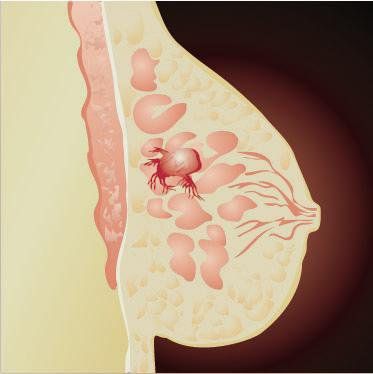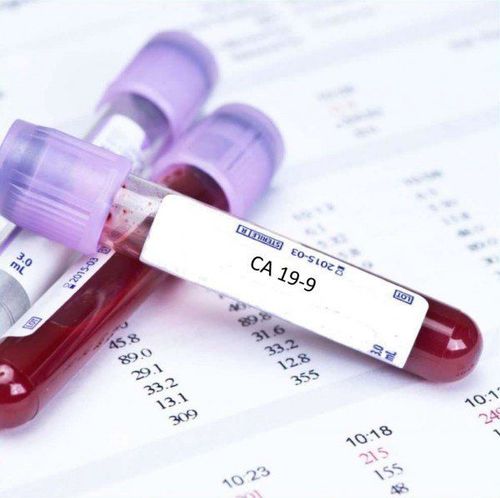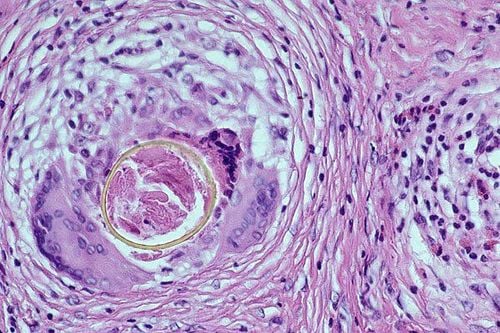This is an automatically translated article.
Among many cancer markers, the CA 15-3 marker is commonly used to monitor treatment response and recurrence of breast cancer. In addition, CA 15-3 is also used to detect some other cancers and some non-cancerous conditions.
1. What is a tumor marker?
Cancer markers are substances produced by cancer cells or other cells of the body in response to cancer or certain benign diseases. Most cancer markers are still produced by normal cells, but the dose is greatly increased in the case of actual cancer.
Cancer markers can be detected in blood, urine, feces, tumor tissue or other organs or in body fluids of some cancer patients. Most cancer markers are antigenic proteins, but not all cancer antigens can be used as cancer markers.
There are some limitations to the use of cancer markers, which are sometimes noncancerous cases with increased levels of cancer markers. In addition, not everyone with cancer has elevated levels of cancer markers associated with this type of cancer.
Trắc nghiệm: Những lầm tưởng và sự thật về ung thư vú
Ung thư vú có tỷ lệ tử vong cao nhất ở nữ giới khiến họ rất lo sợ bản thân mắc phải căn bệnh này. Tuy nhiên, không ít chị em có những hiểu biết thái quá về ung thư vú. Thử sức cùng bài trắc nghiệm sau sẽ giúp bạn loại bỏ được những nghi ngờ không đúng về căn bệnh này.
Bài dịch từ: webmd.com
2. What is the CA 15-3 test?
Cancer marker CA 15-3 stands for carbohydrate antigen 15-3 (carbohydrate antigen 15-3), is a marker of cancer, especially breast cancer. The cancer marker CA 15-3 increased only about 10% in early breast cancers but increased by 70% in metastatic breast cancers. Approximately 30% of breast cancers do not produce CA 15-3, so plasma CA 15-3 levels do not increase in the presence of a tumor.

In addition, CA 15-3 can also increase in some other cancers such as colorectal cancer, lung cancer... and in some benign diseases such as cirrhosis, hepatitis, benign breast tumor , in pregnant or lactating women.
Quantitative CA 15-3 test is indicated for the monitoring of breast cancer. However, the CA 15-3 test is rarely used to screen for early-stage breast cancer, because in the early stages of the disease, CA 15-3 levels are usually not elevated.
3. What is the purpose of CA 15-3 quantification?
The primary use of CA 15-3 is to monitor treatment response and recurrence of breast cancer. CA 15-3 is only indicated periodically over time to monitor treatment effectiveness and detect recurrence in breast cancer patients with elevated CA 15-3. If breast cancer patients do not have elevated CA 15-3 levels, the CA 15-3 index cannot be used to monitor response to treatment and recurrence of breast cancer.
The main limitation of CA 15-3 is that it cannot be used alone to detect breast cancer at an early stage, when the tumor is small and localized (not metastasized), because the extent Its usually rarely increases during this period.
Therefore, CA 15-3 should be indicated in combination with other cancer markers, such as CEA, CA 27-9, estrogen and progesterone receptors, Her2/neu and oncogene expression When breast cancer is advanced, it helps to identify the characteristics of the cancer and select the appropriate treatment. Some studies have shown that this combination of cancer markers has the ability to detect breast cancer at an early stage, when the patient has not yet shown any clinical symptoms, and the tumor has not been detected at the time of screening. breast and even the physical examination did not reveal a tumor.
For some other cancers such as: lung cancer, ovarian cancer, pancreatic cancer, liver cancer and colorectal cancer... the CA 15-3 index can be indicated as a a second marker to help detect these cancers.
4. What do quantitative CA 15-3 results indicate?
In fact, the CA 15-3 test will clearly show an increased level of the CA 15-3 marker in the plasma, this increase is proportional to the cancer stage, size and recurrence of the tumor. tumor after treatment. However, when doing a blood test, an increase in CA 15-3 does not always mean breast cancer. Because in fact, there are quite a few cases of women with breast cancer but CA 15-3 levels are not high. It needs to be combined with many other tests for an accurate diagnosis.
CA 15-3 is only a cancer marker with diagnostic value, not able to completely confirm. CA 15-3 is not sensitive and specific enough to screen for early detection of cancer in the community if there are no symptoms.
To screen and detect breast cancer accurately and early, you should choose the Breast Cancer Screening Package deployed by Vinmec International General Hospital. The check-up package is Vinmec's effort in accompanying women to fight the leading cause of death in women such as breast cancer.

Joining the Package, customers will be examined and consulted with an oncologist, breast cancer screening by bilateral breast ultrasound and mammogram, giving accurate and reliable results. .
Vinmec gathers a team of doctors with expertise and experience; has comprehensive professional cooperation with famous domestic and international hospitals such as the US, Japan, Singapore,...; has a full range of specialized facilities for diagnosis and staging before treatment such as Endoscopy, CT scan, PET-CT scan, MRI, histopathological diagnosis, gene-cell testing, .. .; especially full of main cancer treatment methods: surgery, radiation therapy, chemotherapy, stem cell transplant.... All these advantages have helped Vinmec become a screening medical address. and leading cancer treatment today.
If you need advice on breast cancer screening and treatment, please contact Vinmec HERE for support.
Please dial HOTLINE for more information or register for an appointment HERE. Download MyVinmec app to make appointments faster and to manage your bookings easily.













